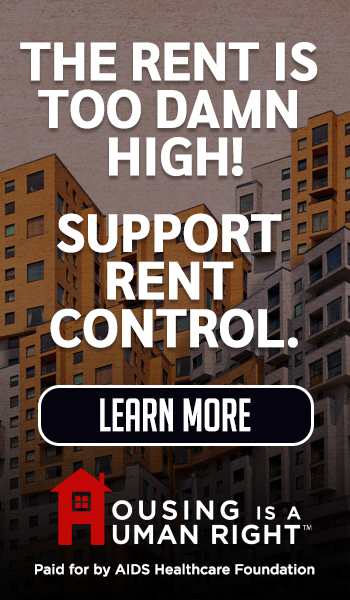Comments
AB 1455 PUSHBACK -
As Sacramento pushes new rules under AB 1455, Los Angeles residents fight to reclaim local control over their private property
Sacramento just declared war on our yards—again. This time, it’s in the name of “fire safety.”
On Monday, Governor Gavin Newsom signed AB 1455, authorizing the State Board of Forestry and Fire Protection to impose new “Zone 0” regulations—the so-called ember-resistant zone—within five feet of every structure in California in the very high fire hazard severity zones.
What most people don’t realize is that the so-called five-foot zone doesn’t begin at the walls of a house. It starts from any attached combustible structure — wood decks, fences, stairways, eaves, patio covers, even railings. In many homes that effectively means the entire front garden or side yard. The “five feet” zone is misleading; the reach of Zone 0 will extend far beyond the front door, swallowing the most intimate spaces around our homes.
These rules will be adopted under emergency authority, exempt from both the California Environmental Quality Act (CEQA) and the Administrative Procedure Act (APA). In plain English: no environmental review of the impacts from the untold number of trees that would be removed under Zone 0, no public oversight, and no opportunity to appeal.
The Board now has until December 31, 2025 to finalize this order. And because AB 1455 classifies the process as an “urgency measure,” the rules will take effect immediately once adopted. The state has essentially given itself permission to experiment on California neighborhoods—without evidence, without accountability, and without consent.
AB 1455 doesn’t stop at the five-foot mark. Buried in the text is a clause allowing the Board to “alter the fuel-reduction requirements between five and thirty feet” to integrate the new ember-resistant zone. In other words, this so-called five-foot rule is just the beginning. The State now has the power to rewrite all defensible-space requirements within thirty feet of every home—the entire landscaped area that most residents in dense Los Angeles actually live in.
A Political Idea Masquerading as Science
Zone 0 is not science. It’s politics wearing a hard hat.
The idea that removing trees and other plants within five feet of a home will stop wildfire loss is not supported by peer-reviewed research. Real fire studies show that most home destruction in the urban environment begins when structures ignite a neighboring structure — not when a healthy shrub or oak tree happens to be nearby. Hydrated, maintained vegetation can protect homes by blocking embers, shading combustible materials, and cooling surface temperatures, actually making a property less flammable.
As a Coalition of Los Angeles Homeowner and Resident Organizations wrote in its October 10 letter to the Board of Forestry, “Zone 0, compounded by AB 1455, represents a false promise of safety—a policy that removes healthy vegetation, increases heat and erosion, and erodes local control without addressing the real drivers of wildfire loss.”
This is not about saving lives or homes. It’s about saving face. Zone 0 gives Sacramento the illusion of decisive action while ignoring the actual causes of wildfire destruction—poor land-use planning, sprawling development into hazard zones, poor firefighting logistics, collapsing infrastructure, and a chronic failure to deliver water when it’s needed most. In the recent Eaton and Palisades fires, residents watched engines idle because hydrants ran dry. Those fires weren’t lost to shrubs or trees or gardens; they were lost to coordination breakdowns and underinvestment in the very systems designed to fight fire. Instead of addressing those failures, the state is blaming plants.
The Hypocrisy: More Density in the Burn Zones
If Sacramento truly cared about fire safety, it wouldn’t be passing laws like SB 79, which allows tall apartment buildings in the Very High Fire Hazard Severity Zones—the same places the state claims are too dangerous for a ficus hedge.
And we know that hedges are not the problem. We have the proof right here in Los Angeles. In the Eaton and Palisades fires, many homes were destroyed by structure-to-structure ignition while yards filled with maintained plants stayed green and, in some cases, helped save homes. Residents in the burn areas saw it with their own eyes. The Board of Forestry calls that “anecdotal,” but post-fire evidence is science too—and it’s far more reliable than the staged insurance industry demonstrations used to justify these rules.
Let that sink in: the same Legislature that now demands homeowners clear cut the gardens around their homes is simultaneously encouraging developers to build dense housing towers in known burn corridors.
Zone 0, like so many recent bills—SB 9, SB 10, SB 423—is not about safety; it’s about control. It extends the same philosophy that drove the housing mandates: strip away local authority in the name of crisis response, consolidate power in Sacramento, and let the political donors of “climate-proof growth” fill in the details later.
The result? More bureaucracy, less ecology, and no real improvement in safety.
Los Angeles Pushes Back
On October 7, the Los Angeles City Council voted unanimously to oppose Zone 0 and adopt the recommendations of the City’s Community Forest Advisory Committee (CFAC)—a move backed by the Los Angeles Fire Department and a coalition representing thousands of households from across the City of Los Angeles’ most fire-prone neighborhoods. Councilmember John Lee called the state’s proposal “a one-size-fits-all approach that will do more harm than good.” Councilmember Katy Yaroslavsky said Sacramento was “once again stuck in a Sacramento mindset,” using data from suburban and rural regions while ignoring Los Angeles’ uniquely urban context. Councilmember Traci Park likewise emphasized that “these rules miss the mark,” urging a methodical approach informed by research, local ecology, economics, and best practices.
Their message was clear: healthy, hydrated, and well-maintained vegetation is part of fire safety, not the enemy of it. Trees and other living green plants are natural cooling systems that keep neighborhoods livable and slow fire spread.
Zone 0 Is an Experiment—and We’re the Guinea Pigs
There is no long-term data proving that “no-plant zones” reduce structure loss. The demonstration plots used to promote Zone 0 were short-term, artificial, and unrepresentative of real residential landscapes. In one of the Board’s “research” studies, the hedge wasn’t a living plant at all—it was a pile of cut branches attached to a metal frame, dried to the moisture level of hay and set ablaze to prove their point. Yet under AB 1455, those simulations have been used to write policy.
What’s worse, AB 1455 explicitly authorizes the Board to extend its reach up to thirty feet from every structure. This means the experiment doesn’t end at the foundation line or an attached deck—it continues into gardens, hillside slopes, and entire yards. If Sacramento can dictate what grows there, the concept of private yards and local control effectively disappears.
If this experiment fails—as many ecologists predict—it will mean irreversible damage: significant canopy loss, erosion, invasive-weed spread, higher neighborhood temperatures, and rising public-health costs. Los Angeles already knows what happens when the shade disappears: people suffer, birds vanish, and our cities become tinderboxes.
When Our Places Are Struggling, The Response Must Be Local.
Zone 0 is just the latest chapter in Sacramento’s quiet war on local governance. From zoning to private yard management, the state’s message has been consistent: we know better than locals do.
Sacramento’s approach to wildfire governance treats houses as forests and cities as fuel breaks. But in the urban environment, it isn’t the plants that burn—it’s the structures themselves. Yet the State continues to impose a forest-management model on densely built Los Angeles neighborhoods where fire behaves differently and spreads through human infrastructure, not chaparral.
The writer Wendell Berry often speaks of the wisdom of place—the understanding that a community’s ability to care for its land comes from those who live and work on it every day. He argues that real stewardship depends on local knowledge and community responsibility—not distant systems run by people who will never see the damage their decisions cause.
Local control isn’t a relic—it’s the foundation of democratic resilience. When Sacramento imposes one-size-fits-all rules under the banner of “emergency,” it erodes cities’ ability to respond to real risks in nuanced, science-based ways. Fire safety without local wisdom isn’t safety at all. It’s political theater.
Fire safety is serious work, but it has to be smart work. MySafeLA, a longtime partner of the Los Angeles Fire Department, remind us that true prevention comes from common sense and maintenance, not from scorched-earth policies. recently issued a statement supporting the City’s position and reinforcing what residents living in the fire zones have said from the start: wildfire policy must reflect the realities of Los Angeles, not Sacramento mandates. Keep vegetation well-maintained, hydrated and free of debris. Harden your home — seal vents, clear gutters, and use ember-resistant materials. Remove obvious combustibles within five feet of your home where practical — things like wood chips, and firewood. And above all, have a family evacuation plan and know where to go. These are actions grounded in local experience and evidence — the kind of wisdom that grows from living in a place, not legislating from afar.
These are the steps that make homes safer and communities stronger. They are grounded in local experience, not political theater. Because when our places are struggling, the response should be local.
(Diana Nicole is an ecological horticulture expert. With clients including The Walt Disney Company, she has over 20 years of experience serving major corporations and nonprofits. She now focuses on fire-resistant residential gardens that support biodiversity in fire-prone areas. Learn more at www.dianaznicole.com)






